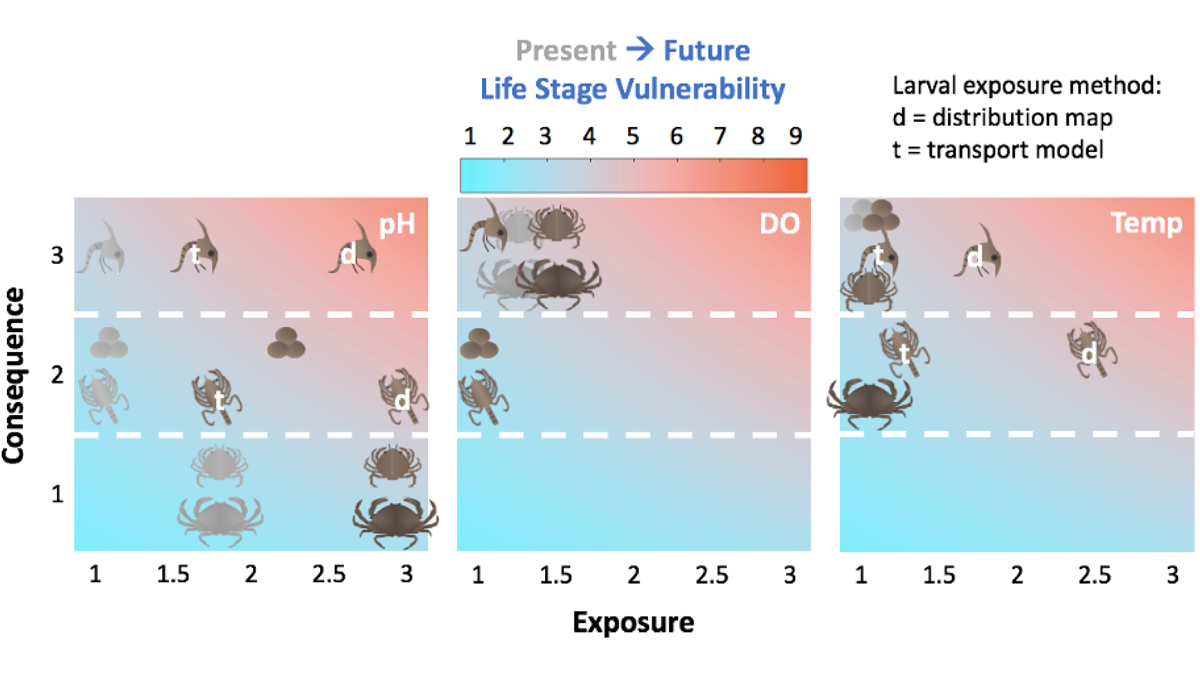Editors’ Highlights are summaries of recent papers by AGU’s journal editors.
Source: AGU Advances
Climate-related changes to ocean habitats put species at risk. This risk has important consequences when the species is the target of a commercial fishery, such as the Dungeness crab fishery. Berger et al. [2021] use a modeling study to assess the vulnerability of Dungeness crab life history stages to conditions of low oxygen, warming temperature, and reduced pH (increased acidity) that are projected for its habitat along the west coast of the United States by 2100. Their assessment showed that the degree of vulnerability to stressors is life-stage-specific, but all Dungeness crab life stages were negatively affected by reduced pH. The approach used by this team can be used to identify the combinations of life stages and stressors that are likely to occur, providing guidance on decision-making to protect vulnerable life stages exposed to multiple stressors in a changing ocean.
Citation: Berger, H., Siedlecki, S., Matassa, C. et al. [2021]. Seasonality and Life History Complexity Determine Vulnerability of Dungeness Crab to Multiple Climate Stressors. AGU Advances, 2, e2021AV000456. https://doi.org/10.1029/2021AV000456
—Eileen Hofmann, Editor, AGU Advances

